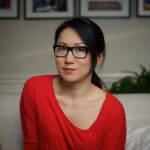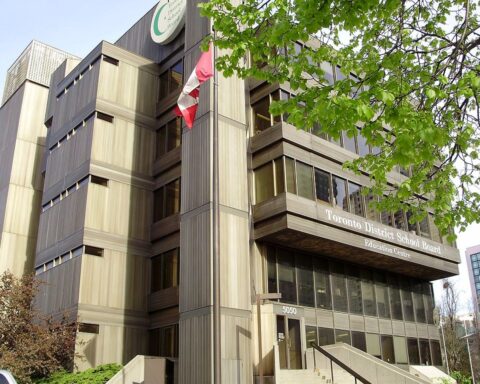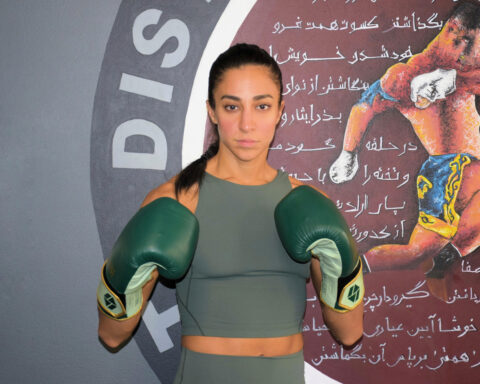Employers and participants at the 2016 Diversity@Work Conference learned that creating diverse workplaces is about more than just hiring more newcomers.
“Inclusion is a state of being valued, respected and supported. It’s about focusing on the needs of every individual and ensuring the right conditions are in place for each person to achieve his or her full potential,” said keynote speaker Zanita DiSalle, who is Royal Bank of Canada’s (RBC) regional vice president for West Brampton.
She explained that diversity reaches should include all those traditionally “excluded” groups such as women, visible minorities, LGBT, aboriginal and indigenous people, persons with disabilities and millennials.
“Diversity without inclusion has no meaning. Without inclusive practice, there is no respect to people’s difference,” DiSalle continues.
The role of the conference
About 150 participants, including job seekers, employers, human resources professionals, diversity consultants, lawyers and students attended the conference, held on Feb. 19 at Ryerson University’s Ted Rogers School of Management.
The conference organizer and executive director of Skills for Change, Surranna Sandy, expressed how important she feels the conference, now in its seventh year, is.
“We want employers to particularly understand the value and the role immigrants can play to make their businesses very successful. We look at different things, for example, how diversity helps you [business] make more money, helps you gain more customers, helps you retain your staff. This year, we look at the future for diversity, what strategies and tools you need to have,” Sandy added.
“Inclusion is a state of being valued, respected and supported.”
One speaker, filmmaker Ian Sun, explored how the technological revolution changed workplace diversity. Ontario Human Rights Commission’s chief commissioner Renu Mandhane was also present to discuss perspectives on human rights and diversity.
Workshops during the day focused on different approaches to diversity and inclusion, such as how to create inclusive workspaces; understanding and minimizing unconscious bias in hiring; the gender identity and expression toolkit to create authentic workplaces; and best practices for workspaces with multiple generations.
Experiences of diversity and inclusion
In her keynote, DiSalle explained that when she came from Jamaica to start her new life in Canada, she immediately realized the difference between her and her classmates after dressing in her traditional bandana shirt to go to kindergarten.
“I heard one lovely little girl tell her friend, ‘Don’t touch her, or you will become brown,’” she said. “Do we have diversity? Yes. Is it inclusive? No.”
“Do we have diversity? Yes. Is it inclusive? No.”
To further illustrate how our physical differences are only skin-deep, DiSalle played a video created by the Ad Council titled “Love Has No Labels”. It features people on the street watching as pairs of skeletons on a screen talk, kiss and hug.
When the pairs come out from behind the screen, it’s revealed that among the skeleton pairings are are same-sex couples, interracial couples, seniors and people with disabilities. This is meant to demonstrate that love takes many forms, but at its core, it looks the same.
Diversity in the workplace
Part of the day’s discussion addressed whether applicants’ foreign-sounding names, accents and credentials could be barriers during the interview process.
Employers also discussed how they could help newcomers develop social and language skills in the workplace so that they can fully integrate into the organization.
When asked about how to foster diversity while hiring to fit job requirements, DiSalle answered: “For our hiring process, we found objectivity is essential rather than subjectivity.
“Because [of] this objective process we have, we ensure that we have different stages of interview process that are based on objective measures and objective questions. Depending on how people do in different stages, we determine whether or not they move to the next stage.”
Employers also discussed how they could help newcomers develop social and language skills in the workplace.
While affirmative action in job and university recruitment continues to be a subject of debate, DiSalle stressed that an objective approach to hiring aims to recognize all the skills employees bring to the company.
“Inclusion is looking at a person as a whole — not just their education, physical characteristics, cultural background or work experience, but how all the elements work together, ” said DiSalle.
To help businesses in Canada integrate newcomers into their workplaces, RBC partners with organizations like Maytree Foundation to provide online tools and resources on sites like Hire Immigrants.
Including the millennial generation
The conference also heard from young people who are eager to participate in the job market.
“We just started a diversity consulting firm, specifically for attention of the millennials and diversity in workplace,” said Shanthiya Baheerathan, a fellow at Studio Y experimental consulting firm at MaRS Discovery District, Canada’s largest innovation hub located in downtown Toronto.
“In our education and workplace system, we start to realize that diversity is representation, rather than inclusion, “ Shanthiya explained.
She explained that representation is just having people in the room, as opposed to having people in the room who are meaningfully involved in the workplace.
“This is not just race and gender or ability. It’s a wide range of things, which includes age, especially as 20 per cent of the population and 40 per cent of the workforce will become the representative of the millennials.”
“I think workplaces should really move towards to making themselves more inclusive,” she concluded.
Shan is a photojournalist and event photographer based in Toronto with more than a decade of experience. From Beijing Olympic Games to The Dalai Lama in Exile, she has covered a wide range of editorial assignments.





